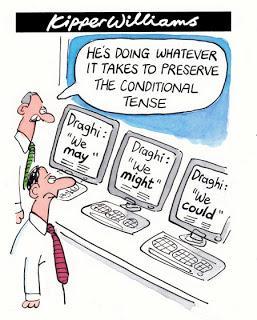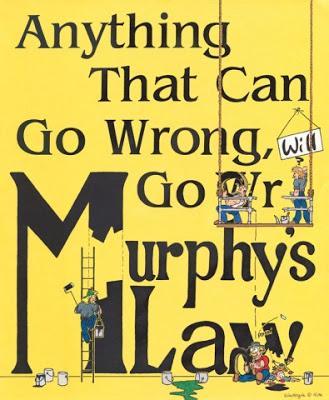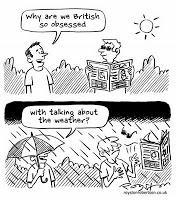
Some of the hazards of English acquisition in Spain.
If you're not careful in this job market, they'll eat you up!
Since I last wrote, I've gotten quite hooked on e-books, so in keeping with my proclivity for digressions in these entries, here I'd like to first share with you some discoveries
1) Project Gutenburg – for free ebooks, but mostly classics
2) Open Culture – for free ebooks, but also free other cultural resources (videos, etc.)
3) Freebooksifter – for free ebooks available daily at Amazon [full disclosure: a friend's project]
– USA site | UK site | Spain site | Germany site
4) Kindle Books Under $5 – not free, but very cheap ebooks... and all good quality reads [full disclosure: a friend's project]
5) Amazon.com Free Ebook Collection Page – Amazon's list of other free online sources for ebooksSo for those of you who are expat mercenary TEFL teachers, always on the move, I recommend you check these links out as you lighten your luggage by swapping paper books for digital ones. (Perhaps because of the rise of e-books and blog publishing, the world of book publishing and style editing has gotten more dangerous in recent years, as this The Onion article attests: "4 Copy Editors Killed In Ongoing AP Style, Chicago Manual Gang Violence".)

This is a fun internet meme that was circulating not long ago, great for us English teachers.
Okay, with that aside, assuming I've lost those of you with short attention spans, here are some English-lessons for those of you who are still reading...
***Lesson 16: Cooking – Vocabulary, reading and discussion***
This exercise requires some knowledge of cooking and a lot of pantomiming. Fortunately, when I teach I'm quite theatrical and I love to cook, so this was a fun class to teach. My students specifically requested it. I give them the following handout with two pages of vocabulary (one page focused on eating and dining vocab, the other on cooking and food prep vocab), and then two pages of recipes in English:
Click here to load a PDF of my Cooking Vocabulary handout.

I can't resist including this graphic in my handout,
to make the point that this regional division of the tongue
according to the four tastes is actually a total myth.
Or, to get them practicing numbers and fractions, you can ask them what they think of the U.S.'s non-metric measurement system. As a Texan, I also can't resist asking them what they think of spicy food. (Answer: most or at least many Spaniards hate it, despite being the country which helped import many chilis from the New World to the Old!) Then I have them read the recipes and consider the use of special language ("morsels" of chocolate chips), discuss challenges like countable (e.g. friend) versus uncountable nouns (time), how the two work with quantifiers ("a few friends", not "a little friends"), special countable nouns used with uncountable ones ("piece of cake", "glass of water", "pinch of salt"), and how meaning changes for some nouns that appear in both forms (i.e. "Cake! Cake! Cake!"). This is largely advanced vocabulary, but even intermediate students will enjoy it and learn from it if they are into cooking.
What I find amazing is that, while food vocabulary is quite common at all levels of English-learning, cooking vocabulary lessons are very rare in TEFL books. Does anyone know why? I think it is a great TEFL topic.

Wanna waste an hour? Try floating the following question to your European friend/student:
What do you think of the metric system? Do you think it's better
or no different from the U.S.'s measurement system? Five hours later,
you will have an elaborate thesis on what is fundamentally wrong with America,
and your friend/student will have had a lot of practice with new vocabulary and fractions.
***Lesson 17: Six Fun Kids' ESL Games – Reviewing is fun! Honest!***
 This year I'm teaching a group of kids, ages 8-11, which is a little different than adult foreign-language learners. They're sponges when it comes to pronunciation. More likely to listen and repeat, and then retain new vocabulary sets. But they also get bored. One day a couple of months ago, I realized that I was starting to lose some of them, and sat down and thought hard, looked around for ideas for how to make the class more entertaining. In short, I came up with, found online, and/or adapted a variety of different games to the purpose of introducing, testing, and reviewing English vocabulary and grammar. In this PDF are a list of my favorites (by which I mean their favorites), which I encourage you to sprinkle into your teaching schedule here and there in order to liven things up. I list the games in order of increasing complicatedness:
This year I'm teaching a group of kids, ages 8-11, which is a little different than adult foreign-language learners. They're sponges when it comes to pronunciation. More likely to listen and repeat, and then retain new vocabulary sets. But they also get bored. One day a couple of months ago, I realized that I was starting to lose some of them, and sat down and thought hard, looked around for ideas for how to make the class more entertaining. In short, I came up with, found online, and/or adapted a variety of different games to the purpose of introducing, testing, and reviewing English vocabulary and grammar. In this PDF are a list of my favorites (by which I mean their favorites), which I encourage you to sprinkle into your teaching schedule here and there in order to liven things up. I list the games in order of increasing complicatedness:
Click here to load a PDF of six Kids' ESL Games handout.

Colleague's hand-scribbled
instructions for "Wheel of Fortune"
After I implemented Operation: "Win the Kids Over with Games", I found them more excited about class (though I do now have to stave off their persistent requests to play games). But let's face it, it's also useful to have some games on hand for whenever you need to kill a bit of class time, or for after that test or on those days when your kids are tired and need a break. So it's worth the time prepping games... and, yeah, I'll admit it, it's also really fun :)

My pre-class preparation for the Jeopardy game. Which reminds me.
I had my students keep a "Weather Diary" (write down the weather for a week)
the week before, which was also a nice homework activity for kids.

The board after playing "Double Jeopardy". Looks like Team 1 won.
***Lesson 18: Travel/Geography for Kids – Vocabulary and discussion***

How many states can you name? Together as a class,
my kids came up with 22, which impressed me.
Click here to load a PDF handout for a Kids Geography lesson.
This activity is good because it teaches them the English names for places, as well as the differences between city, state, country, and continent (which confuses them a bit even in their own language). You can build on this activity by using geography names in the "Alphabet Relay" game I explain above. Invariably, this activity also leads to conversations about here and there, which is an opportunity to share cultural things with them, to the extent that they are interested.

I don't have a handout for it here, but another great activity with the kids
was singing the "Peanut Butter & Jelly" song, an American classic!
For a nice, detailed explanation of the song and fun hand motions,
watch this video. Great for teaching vocabulary on how to make a sandwich.
"First you take the peanuts and you crunch 'em, you crunch 'em..."

Too complicated for kids, this American English Dialects Map is incredible,
and worth sharing with your adult students. Go to the link and you can
click on the map to hear different regional dialects and pronunciations.
***Lesson 19: Conditional Tense – Conversation and grammar***

In this economy, it's even more important to teach
the conditional tense, as this cartoon illustrates
with Mario Draghi's conditional, prevaricating language.
Some of my top conversation class topics this year have been:
• "How do we know what we know about [insert topic x]? What are your sources of information?" [vocab: the media, media filter/bias]
• "What is the right age for kids to leave home and become independent? Why? (What about legal drinking age; driving; voting?) [vocab: rights, privileges, stages of life] • "Do you worry about privacy on social networks (i.e. Facebook)? Do we have a right to privacy, and if so, does that extend to celebrities and politicians?" • "We are living faster, but are we living better?" [comparatives; opinion language; vocab: "pace of life", "waste of/spend time"] • "What tips/advice would you give for slowing your life down and being positive?" [advice language; vocab: opportunistic versus optimistic, "appreciate the little things", "silver-lining"] • A colleague came up with this good one: "If you could have any super power, what would it be?" [modal verbs of possibility and ability; second conditional; vocab: super powers]• Discuss the concept of a culture within a culture (describe Jewish culture in America, popular use of Yiddish expressions, foods like bagels, etc.), and then ask: Can you think of similar examples of distinct cultural, ethnic communities within your country? (Cue discussion of gypsies in Spain, both a part of "Spanish" culture, and yet also distinct from it. Analogies: jazz is to African-Americans as flamenco is to Spanish gypsies?) [vocab: assimilation; first-generation v. second-generation, exodus, "Oy vey!"]

Ah, the first condition of first conditional,
"Anything that can go wrong, will go wrong."
But for one conversation topic I prepared a bit more, to make it grammatically relevant to their language-learning needs. I gave them a quick re-introduction to the three types of conditional. I make a point about how all three types have a basic similar structure of condition clause —often with "if" and never with "will"— versus the consequent clause... and draw a chart on the board (like in the handout below), diagramming the three types, their similar structure, and when we use each. I then posed the following question to get them to practice the conditional tenses: "If you could travel anywhere in the world, where would you travel?": Click here to load a PDF guide to the Conditional Tenses. I went around the class using three different questions to force them to apply the appropriate conditional tense. For first conditional, I got a lot of mileage out of talking about what is possibly my personal religion: Murphy's Law. In the handout I mention two songs that are great for 2nd and 3rd conditional: "Wouldn't it be nice" by the Beach Boys and "Top of the World" sung by the Dixie Chicks, respectively. (I also tend to find myself singing "If I were a rich man" from Fiddler on the Roof whenever I teach 2nd conditional. And of course snapping my fingers, arms raised in the air, dancing... an image that ensures they'll never forget the second conditional. It might even get them using third conditional: "If I had known how crazy my English teacher was...")
My personal favorite song to share on 3rd conditional tense is the cover of "Top of the World" by the Dixie Chicks. The song is a nice example of how to use this tense to express regret, introduces slang forms ("I wished I'da"), and introduces that Texan institution, country music! As the students got more comfortable with the tenses, I tried to get them to talk to each other, such as giving each other advice: "If I were you, I would do such and such while you are at your dream destination." And towards the end, I shifted gears and had the advanced students practice talking about regrets using the third conditional: "If I had known how rainy it would be in London, I would have packed an umbrella." To wrap up, I told them about the expression: "Would've, could've, should've" (usually pronounced "Woulda, coulda, shoulda!"). Useful both for how it is used to reprimand people for needless "hindsight is 20/20" regret, but also as a pneumonic for remembering the common forms of third conditional.
Digression: To all my non-English-speaking readers, if you are looking for
an excellent reference for all slang words, I direct you to Urbandictionary.com. Trust me when I say that even us native speakers are regularly consulting it to catch the meaning of the latest new catch phrase or text message shorthand. ***Lesson 20: Speaking Test Tips – Test preparation*** I always say that there are three subjects with which you can have a conversation with anyone, anywhere on earth:
I always say that there are three subjects with which you can have a conversation with anyone, anywhere on earth:1) local politics (which is why I recommend everyone read the local newspaper),
2) sports (which is why I try to stay on top of the soccer leagues here), and
3) the weather (which is why you should always carry an umbrella).
So if your students want to learn how to communicate and socialize with people, those are the topics they should practice. On the other hand, most of my advanced students just want to know how to pass the First Certificate Speaking Test. For them, I've kept this list of tips and common challenges I've run across over the years:
Click here to load a PDF of tips and useful vocabulary for English Speaking Tests.
It's just a list, so for a more polished guide to the First Certificate Exam Speaking Section, I direct them to Slendid Speaking's webpage on it. The list comes from my speaking clinic with students. One thing I do with my advanced (adult) students at least once a year is give them a practice First Certificate style speaking test, and I record them. When they bring me a CD I burn a copy of it for them (and throw in a bunch of "goodies" like the TEFL ready-made lessons materials you're finding here). With this recording I can give them a clinic on their common speaking errors (pronunciation, use of "eh and "em" instead of the English "uh" and "um", forgetting third person singular, etc.). It does take a lot of one's time outside of class reviewing them, but my students are always very grateful. There is nothing like hearing your own voice on a recording to force you to pay attention to how you actually speak.

I ran across this great poem, which addresses the peculiar English-speaker's predilection for turning nouns
into verb gerunds. For a larger font copy, you can find "The Verbing of America" poem here.
The best parody of this trend is the UK Fonejacker's Indian ISP call center guy, who ands "ings" to everything.
In recent years, as a kind of addendum to the more general schadenfreude fest everyone is having with speculating about why Spain's economy is going so poorly, there has been a discussion about Spain's lack of competitiveness in the world of English as a Second Language. Needless to say, English-speaking expats, many of whom teach English here, are regularly drawn into this discussion, and the question,
Being the disagreeable, devil's advocate that I am, I question the whole discussion. In my opinion, I'm not so sure Spaniards are any worse than anyone else at picking up a foreign language. (Whenever a Spaniard apologizes to me for not speaking English, I tell them that Spanish is more useful in Spain anyway.) I've sat in foreign language classes in the U.S. and UK, and trust me, there is much left to be desired there, too.

It is funny how the positive/negative valence of "bilingual education"
can change dramatically here in Spain if you switch from talking about
Spanish-English "bilingualism" versus Spanish-Catalan bilingualism.
I have a secret mission when I teach my classes. (Shh! Don't tell my students!) With these lessons, I'm trying to get the students to fall in love with the language – to woo her, not to reason with her. Because it is my sincere belief as an educator that it is only when a person feels a passion for a subject that they begin to truly start to learn it, internalize, and make it a part of them. Frankly, in my mind, I don't get paid to teach English. I get paid to sell curiosity and enthusiasm for it. My hope is that these lessons will help you to do so, too.
